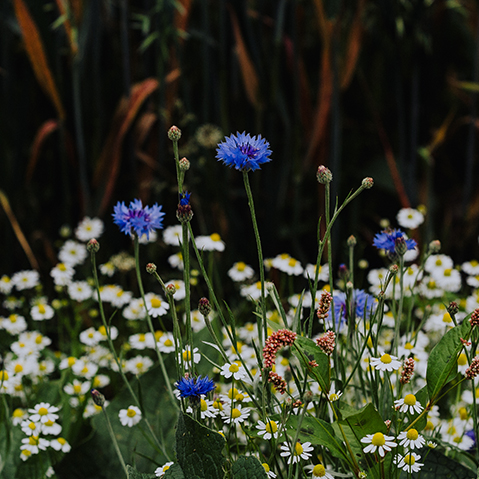
Harvested with care - Plant to medicine
It’s not just bees that are busy in Weleda gardens, but gardeners racing to harvest each plant at the right time, in the right way, so that our remedies and bodycare ranges will be fresh and effective.More than 300 different plant species are used in Weleda medicines and bodycare, many grown by our own team in gardens in the UK. We not only grow and harvest the plants, we also make the tinctures, the first step to transforming them into medicines.
While summer is a busy time, the harvesting year really begins in late winter as we dig up roots. It’s a great privilege for gardeners to get such intimate knowledge of plants – from the massive bryonia root, weighing up to three kilos, to the greater celandine, with its beautiful flame colour root. It’s hard work – often in unhelpful weather – and afterwards the roots have to be washed, dried and chopped.
As the days lengthen we next harvest new young shoots of plants like blackthorn and western red cedar. There’s just a short time to pick the shoots as they green and before they flower. We gather up to 20 kilos, using scissors and human hands, to ensure that no woody bits get into the mix.
Now the trees are coming into leaf and it’s time to harvest bark from white willow and horse chestnut, and branches and roots from witch hazel – more digging. Very quickly we move on to the leaves of borage, lemon balm and silver birch. Tasks are coming thick and fast, and it’s good that a leaf of borage popped in a glass of lemonade gives it a wonderful cooling cucumber flavour, ideal for a momentary pause in the sun!
Then summer is in full swing and we race to keep up with flowers like chamomile – which can literally send us to sleep as we’re picking – and broom stripped straight off the bush. There are flowering herbs, including St.John’s wort and rue, where we take everything above ground. Everything is processed as quickly as possible while the plant essences are at their peak.
There are summer tasks we love – like the harvest and preparation of wild strawberries – and others we aren’t so keen on. Try harvesting nettle without being stung! The final harvests come in the traditional season of fruit and seed, with challenges such as gathering 60 kilos of hawthorn berries from thorny bushes.
Every plant has to be prepared as soon as possible after harvest. First, plants are chopped finely before being steeped in pure plant alcohol, sometimes with distilled water, for a minimum of 10 days. Nearly all homeopathic ingredients start this way, but we also use warmth, for example when the remedy will address circulation. Here the plant mixture is heated to body temperature (37°C), maintained at heat for one hour and then left for 14 days. Some plants mixtures are decocted – heated to boiling in a glass container as the steam condenses.
Gardeners do get a break sometimes – Weleda’s factory production staff finish the process by pressing and filtering the mixture before it goes into the products they make. Maybe that will give us a moment to enjoy the lemonade with borage!

